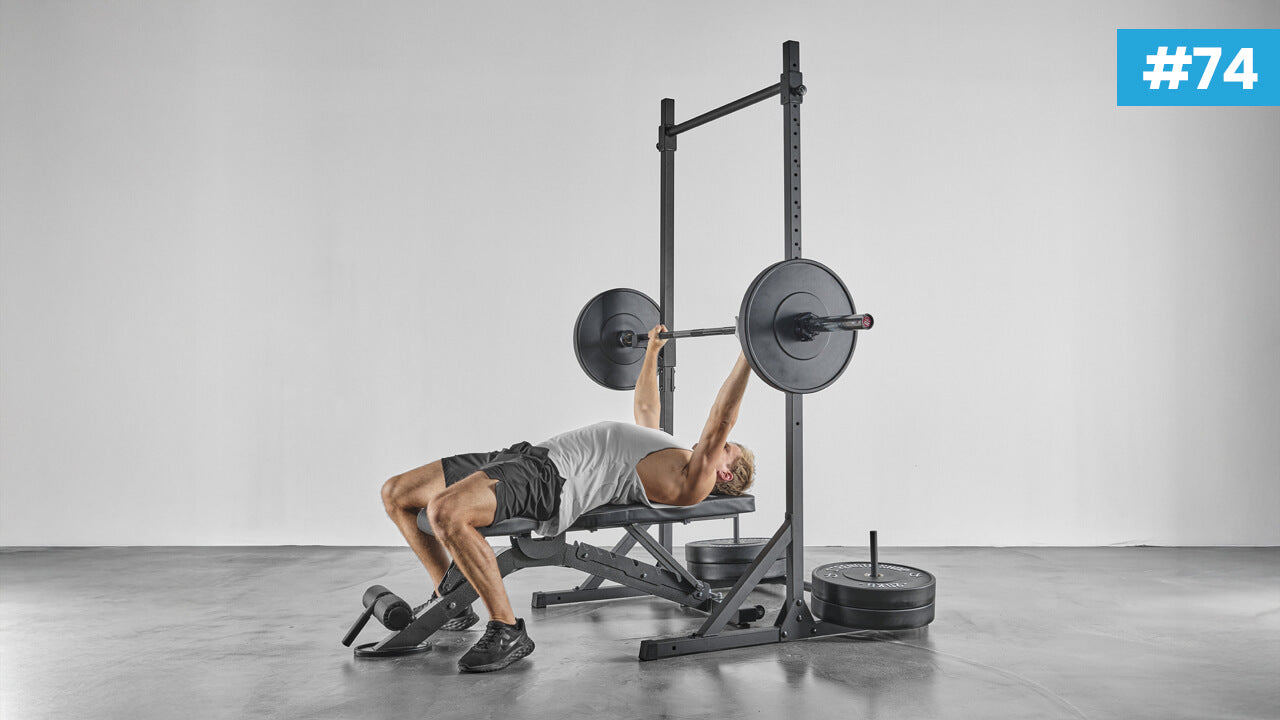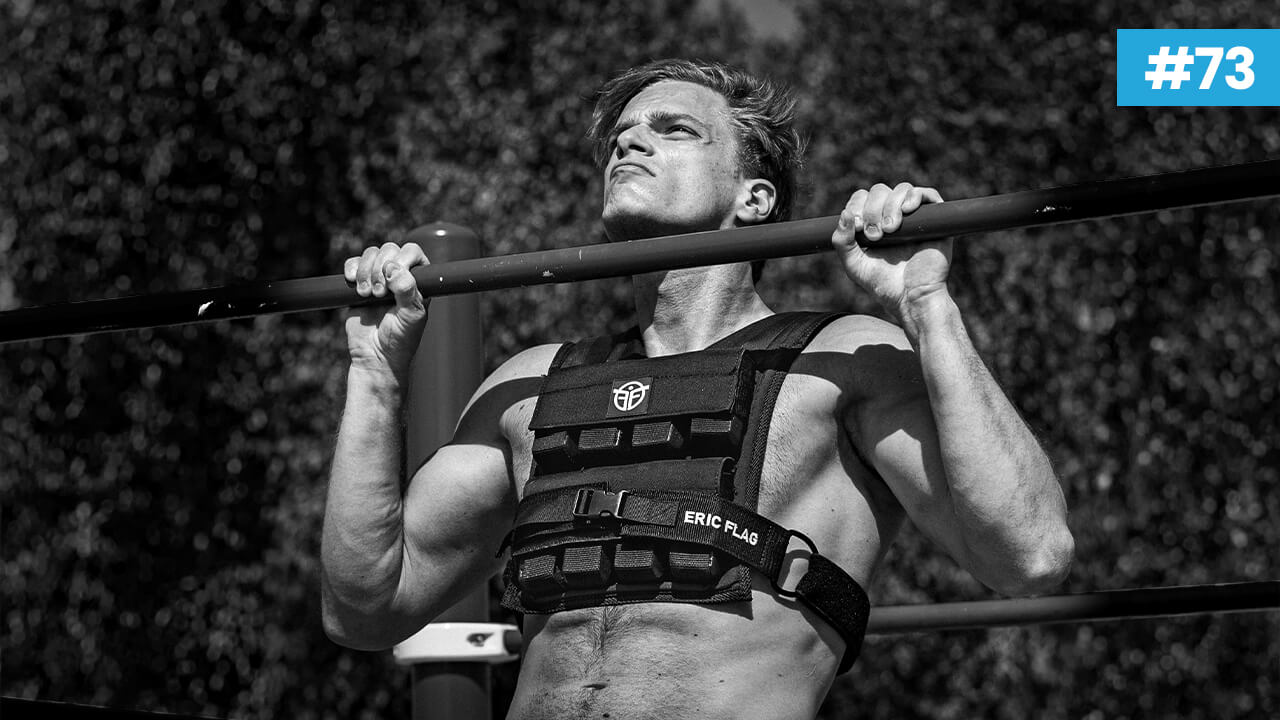Everything you need to know about Push-Pull Legs!
Hi there,
Want to take your bodybuilding to the next level but lack the time or don't know how to structure your sessions? The Push Pull Legs program is the solution that will propel you towards your goals 💪
It involves cleverly dividing your workouts into 3 categories: push for pushing movements, pull for pulling movements and legs for leg movements.
In this article, you'll discover how to adapt this approach to your level, reach your goals faster and avoid the mistakes that slow down your progress. It's time to maximize your earnings 🔥
Understanding the concept of Push Pull Legs

Push Pull Legs is a training strategy that divides muscles into 3 main categories:
- Push muscles: pectorals, shoulders and triceps.
- Pulling muscles: back, biceps and forearms
- Legs: quadriceps, hamstrings, glutes, calves and adductors.
This method allows you to organize your workouts over 6 days a week, giving each muscle group 3 to 4 days of recovery. It's an effective, structured approach to bodybuilding.
Structuring your Push Pull Legs program
You've understood the concept of Push Pull Legs, but how do you put it into practice? What exercises should you choose, how many sets and reps should you do, and how should you organize your sessions?
We'll give you examples of Push Pull Legs programs and tips for optimizing your training and recovery 🔥
Push day

Push day is dedicated to the pushing muscles: pectorals, shoulders and triceps. The aim is to work these muscles with basic and isolation exercises, varying angles and holds.
Here is an example of a Push session:
| Exercises | Series | Rehearsals | Rest |
| Bench press | 4 | 6-8 | 2 min |
| Dumbbell bench press | 3 | 8-10 | 1min30 |
| Averted lying | 3 | 12-15 | 1min30 |
| Military development | 4 | 6-8 | 2min |
| Side elevations | 3 | 10-12 | 1min30 |
| Dips | 4 | Max | 2min |
A few tips for the Push session:
- Start with the heaviest, most difficult exercises, such as the bench press and military press, which work several muscles at once. Finish with the lightest, easiest exercises, such as splits and extensions, which target a single muscle.
- Choose a weight that allows you to do the specified number of repetitions with good technique. If you can do more reps than expected, increase the weight. If you can't do the number of repetitions you'd like, reduce the weight.
- Respect the rest time between sets, which varies according to the intensity of the exercise. The more intense the exercise, the longer the rest time. Rest time is important to recharge your energy reserves and avoid fatigue.
Pullover Day
Pull Day is dedicated to the pulling muscles: back, biceps and forearms. The aim is to work these muscles with exercises that challenge the posterior chain, varying grip widths and heights.
Here is an example of a Pull session:
| Exercises | Series | Rehearsals | Rest |
| Pull-ups | 4 | Max | 2 min |
| Rowing barre | 4 | 6-8 | 2min |
| Chest pull | 3 | 8-10 | 1min30 |
| Curl bar | 3 | 8-10 | 1min30 |
| Inclined curl | 3 | 10-12 | 1min |
| Hammer curl | 3 | 12-15 | 1min |
A few tips for the Pull session:
- Vary grip widths and heights to challenge the different fascicles of the back and biceps muscles. For example, use a wide, high grip for chest pulls, a tight, low grip for bar rows and a neutral, medium grip for pull-ups.
- Concentrate on the contraction of the back and biceps muscles, avoiding cheating with the shoulders, trapezius or lumbar. Keep your back straight and shoulders low, and pull with your elbows rather than your hands.
- Don't neglect the forearms, which are often the weakest link in the pulling chain. Strengthen them with specific exercises, such as the hammer curl or reverse curl, or use strength straps to relieve them on heavier exercises.
Leg Day
Legs Day is dedicated to the leg muscles: quadriceps, hamstrings, glutes, calves and adductors. The aim is to work these muscles with polyarticular and unilateral exercises, varying loads and amplitudes.
Here is an example of a Legs session:
| Exercises | Series | Rehearsals | Rest |
| Squat | 4 | 6-8 | 2 min |
| Thigh press | 4 | 10-12 | 1min30 |
| Slots | 3 | 12-15 | 1min30 |
| Leg curl | 3 | 10-12 | 1min30 |
| Leg extension | 3 | 15-20 | 1min30 |
| Standing calves | 3 | 15-20 | 1min30 |
A few tips for the Legs session:
- Start with the most complete and demanding exercises, like the squat, which works most of the leg muscles. Finish with the most targeted and lightest exercises, such as leg extension and leg curl, which isolate the quadriceps and hamstrings.
- Choose a load that allows you to perform the indicated number of repetitions with good technique. If you can do more reps than planned, increase the load. If you can't do the expected number of repetitions, reduce the load.
- Maintain full amplitude on leg exercises, descending as low as possible on the squat, press or lunges, and rising as high as possible on the calves. This recruits all leg muscle fascicles, and improves joint mobility.
The importance of recovery and nutrition
Recovery and nutrition are two essential factors in optimizing the results of Push Pull Legs. Indeed, it's during the rest period that muscles repair and strengthen themselves, and the nervous system regenerates. It's therefore important to allow sufficient recovery time between sessions, and to get a good night's sleep.
In addition, nutrition provides the nutrients needed to rebuild muscles and supply energy. You need a balanced diet, rich in proteins, carbohydrates and lipids, and good hydration before, during and after exercise.
Training frequency and intensity
The ideal frequency for Push Pull Legs varies according to your level, your objectives and your recovery capacity, allowing you to train between 3 and 6 times per week :
-
3 times a week: ideal for novices or those with limited time.
-
4 times a week: suitable for intermediate levels, with a focus on the upper body.
-
5 times a week: for advanced users wanting a balanced workout for all muscles.
- 6 times a week: for experts aiming for maximum training volume.
Conclusion
Now you're ready to integrate the Push Pull Legs method into your training program!
This balanced approach effectively targets all muscle groups, maximizing your gains in mass, strength and endurance while respecting optimal recovery 💪
If you need sports equipment, you'll find everything you need in our our store.
See you soon.
Eric Flag







Leave a comment
This site is protected by hCaptcha, and hCaptcha's Privacy Policy and Terms of Service apply.